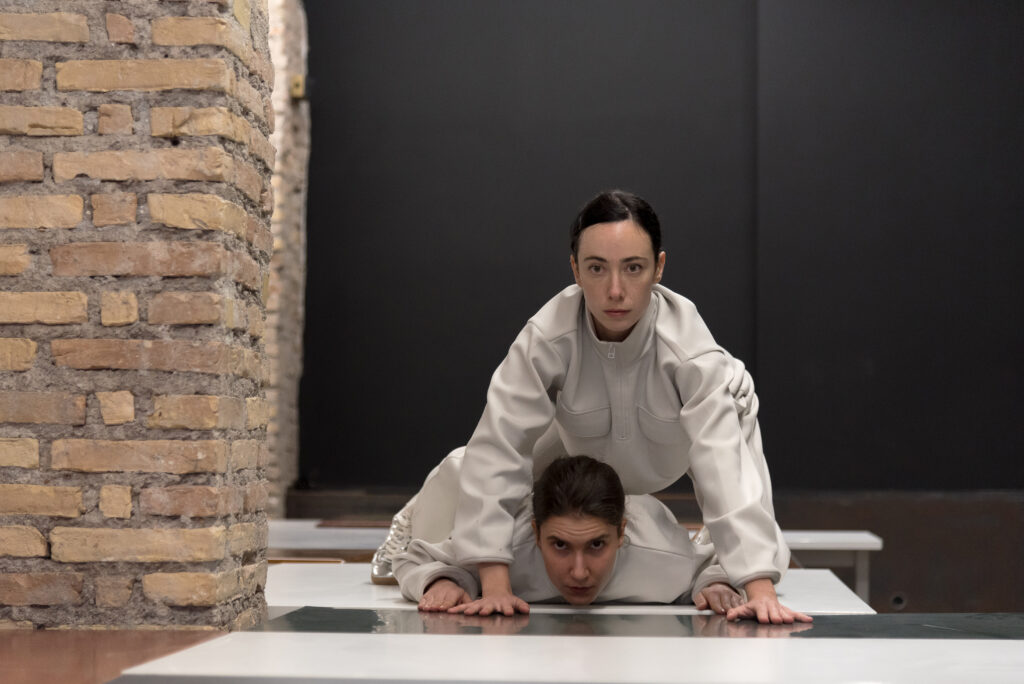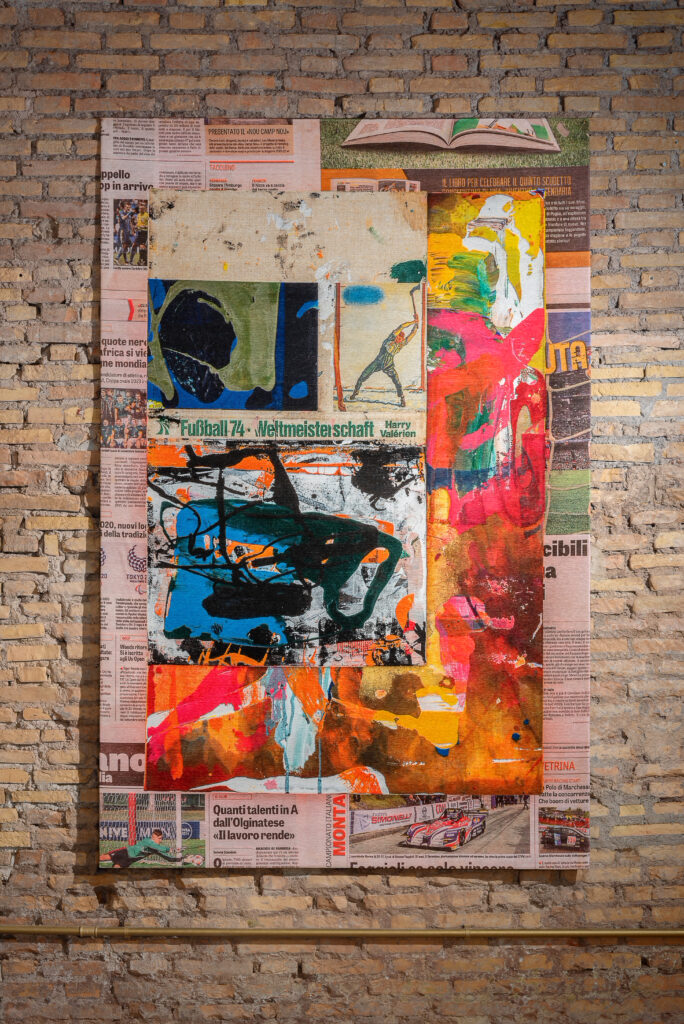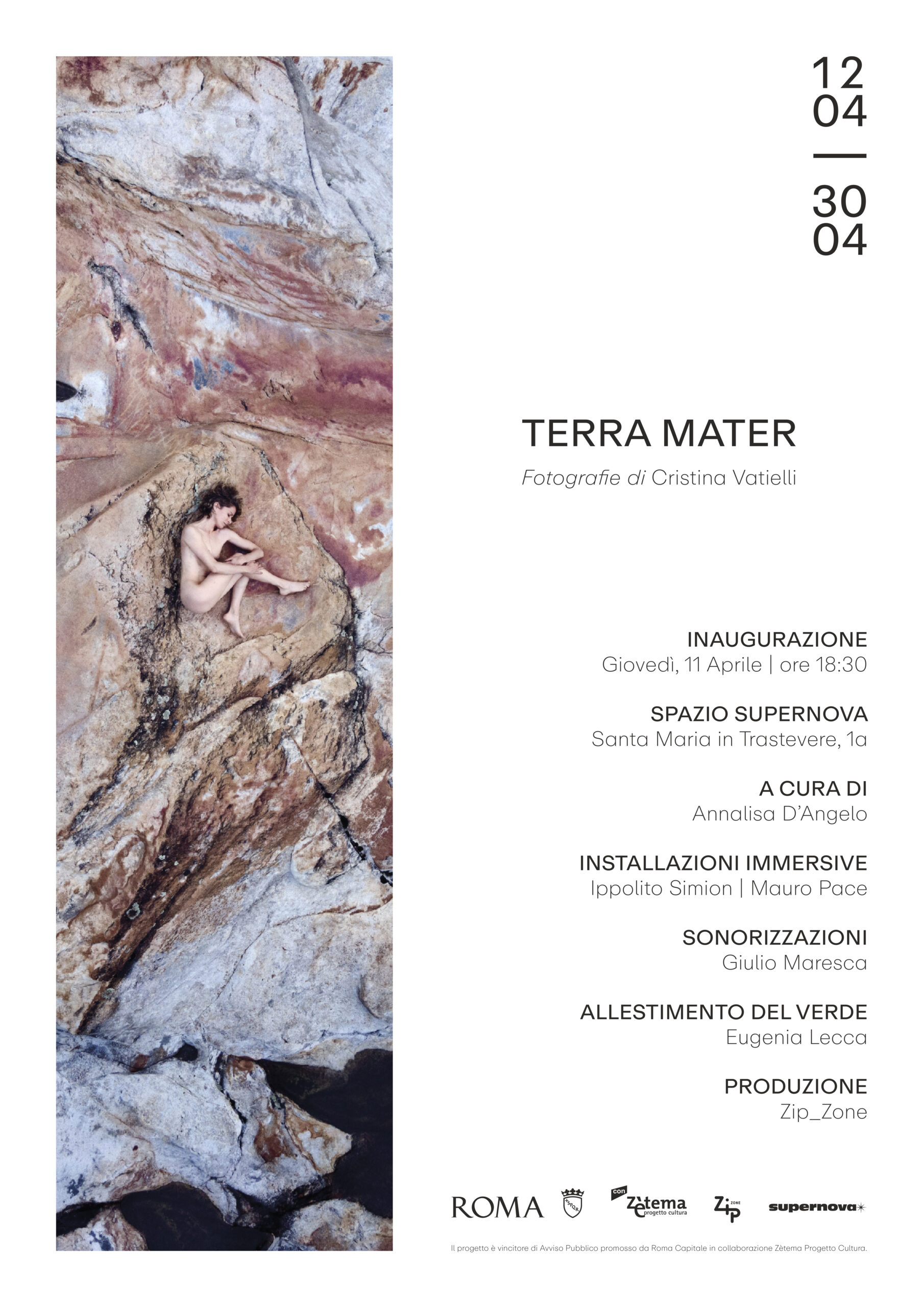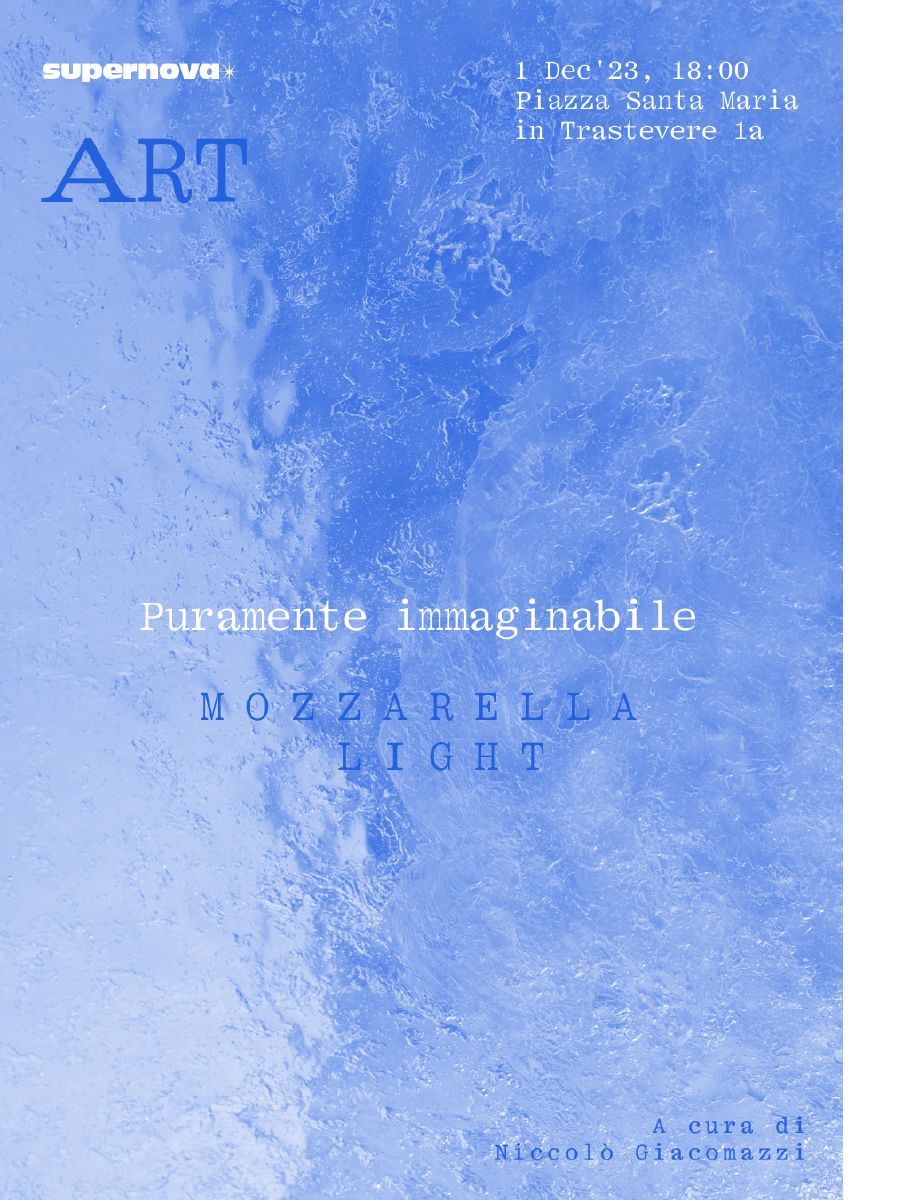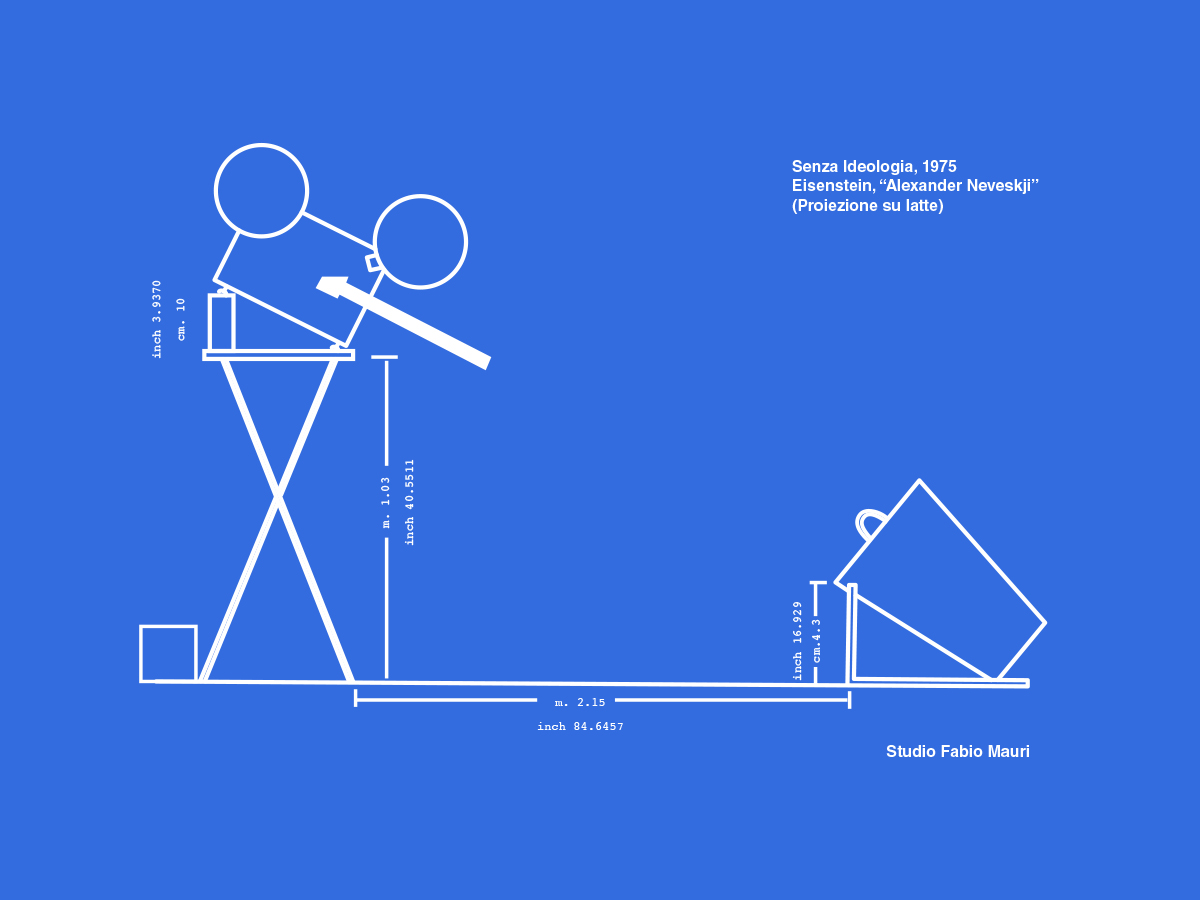SPACE HOUSE by Valerio D’angelo opens a gateway onto the square of Santa Maria in Trastevere and transports us into another reality. As suggested by the title, the exhibition is inexorably linked to the concept of space, understood both in its astronomical and architectural sense due to its site-specific nature, and delves into insights from quantum physics. To understand this union simplistically, imagine standing in front of an automatic dispenser of special and unpredictable balls. Pulling some out, each behaves differently from what one might expect: one might bounce in front of us while moving horizontally, another might take on different forms when observed and when not, and so on. This happens in quantum physics with the study of particles, and in Valerio D’Angelo’s practice with the reflections generated in the dichroic mirrors of his installations.
Access to the exhibition is allowed through a portal that places the viewer at the center of a new dimension. As one passes through, space vibrates, alters, and reflects distorted images, proving that we are one possibility among infinite possibilities. The installation becomes an intermediary place for the multiplication of forms and colors, of truth. Crossing the threshold, one enters Supernova’s spaces where a cold light reveals structures, sometimes colossal, sometimes intangible, revieling elements that appear as boarding gates to other galaxies. The dichroic film, D’Angelo’s preferred material, first appears as a fluid entity and then as an organism that takes on different forms depending on the support it inhabits, be it a column, a Venetian piece of furniture, or a projector. The succession of portal works deprives our universe, and thus us humans, of the centrality we enjoy, instead directing attention towards the unknown, beyond the boundaries of perception. Our image undergoes a doubling, it fragments into displaced worlds in which various existences become possible and probable.
In the last chapter of the exhibition, an image appears that seems to be observed under a microscope: it is the synthesis of Boltzmann’s brain theory. Through the study of lenses and lights, the projection of a micro-fragment of reality is revealed, a transposition of the fluctuating brain that generates what we perceive as real. In this case, the theory itself is reversed; it is no longer the creator shaping and projecting, but rather we are observing its projection in a slow and hypnotic movement. Everything is questioned, us and the entire universe. Even if only for a second.
Statement by Valerio D’Angelo:
“My artistic research focuses on the element of reflection, initially understood as a narcissistic gesture that allows isolating and enhancing one’s own image and opening up new forms of self-perception. Deepening this investigation, the second dimension accessed through reflection has gained increasing importance, coming to be perceived as another, displaced and equally present reality. This thought has taken on disturbing nuances, sowing in my consciousness the sensation that the reflected image was not only the result of our optical mechanism but a reality that observes us in return. We are the fragment, the doppelgänger of other realities.
Reflections on parallel dimensions and meeting portals capable of questioning the centrality of our existence, led me to approach quantum physics. I have been inspired by the idea that our reality is very improbable and possible only because all other possible realities are such: we are an improbable possibility of infinite possibilities. Banally, but also not, it is what is dealt with in the animated series Rick and Morty.
Certainly, in the cosmos of all infinite dimensions, we are not at the center. The other realities are certainly not projections of ours, but – more likely – we are a small nuance of much more probable realities. Whilst conteplating my own reflection, I’d like to think that I myself, could be the result of a reflection. I become a fragment of a possible reality, no longer at the center of the universe. Mirrors are conceived as gates of communication between different realities, where, more than scrutinizing a new one, we realize that we are one in turn, perhaps observed for a moment. The lexicon of my installations aligns with the cinematic and science fiction imagery of the 80s-90s and takes inspiration from post-apocalyptic dystopian narrative, where everything is overturned, and the linearity of our existence is broken.
Probabilistic physics makes us aware of absurd truths that we almost treat as a game. I want to take the probabilities of quantum physics, transfer the awareness, and bring back the experience.”







